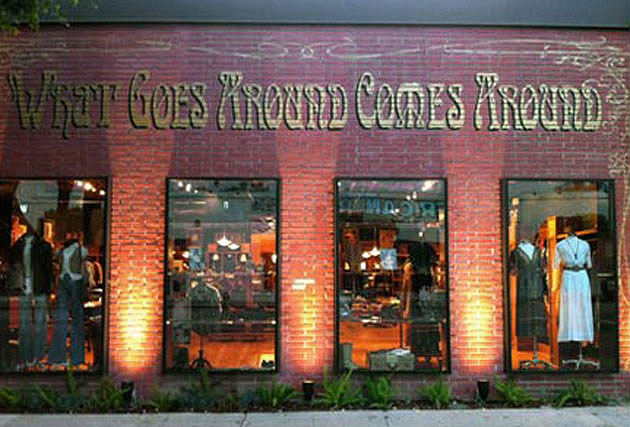Sunday Breakfast by Love For Breakfast
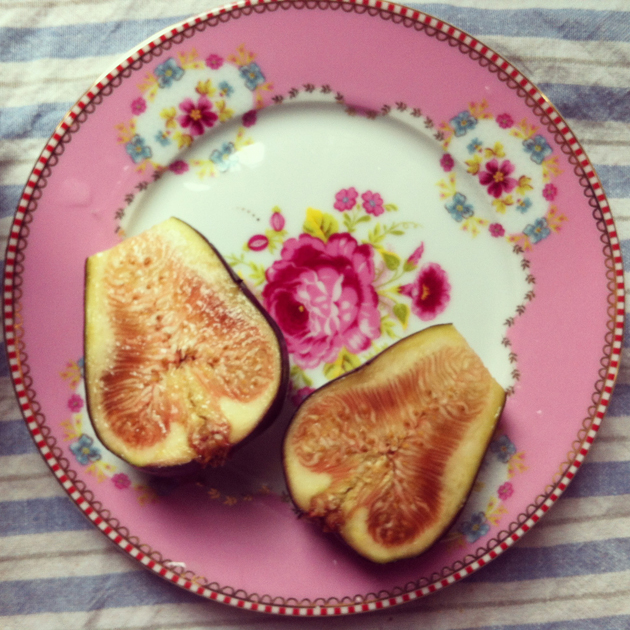
It’s the time of perfumes and sweetness. It’s the time for summer fruits. It’s the time to warm yourself in the sun to start a new day.
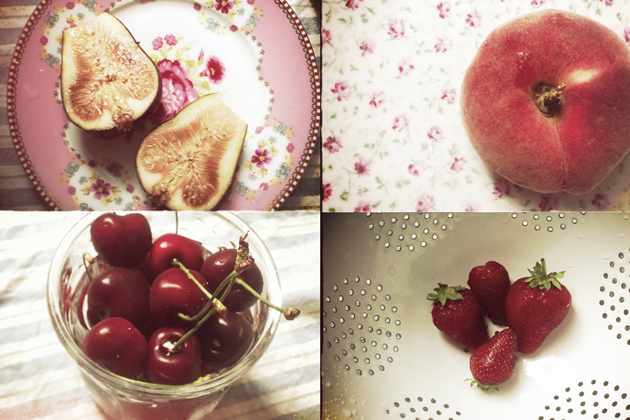
Sunday Breakfast by Love For Breakfast

It’s the time of perfumes and sweetness. It’s the time for summer fruits. It’s the time to warm yourself in the sun to start a new day.

Eyebrows – A Trending Detail
Every season the major trends are presented on the runway, and as most trends, quickly trickled down, adapted and redefined to garments sold to the big masses through department stores. Together with these, there is the staging of the minor ones – the details making the look. These trends are for sure carried out to all levels of the market as well, but might claim a bit more work than a simple buy, and at least momentarily they tend to be a permanent change in a person’s everyday look. This season and even more so for Fall 2012 it’s the eyebrows calling for attention, or, if one is gifted with large, dark and rather rough ones – no attention at all.
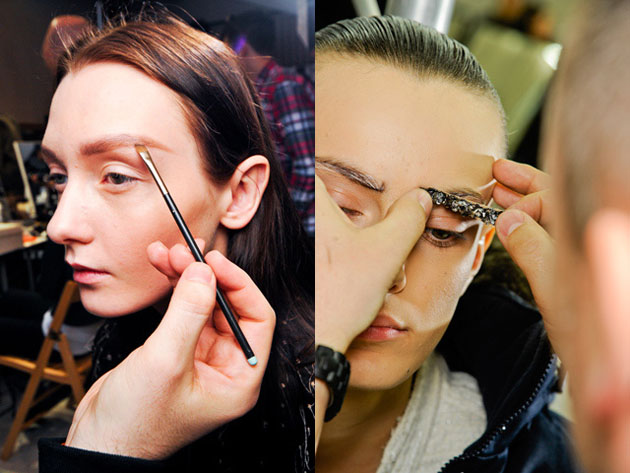
Just like the dip-dye and bi-coloured hair trend, eyebrows have been trending and growing over the past seasons. From the thin, super shaped “Kevyn Aucoin 90’s eyebrows” all the way to fuller and less well defined ones. Looks rarely come out of the blue – they are a logical evolution from a forerunner, a way to express a cultural drift or a response to changes in the society.
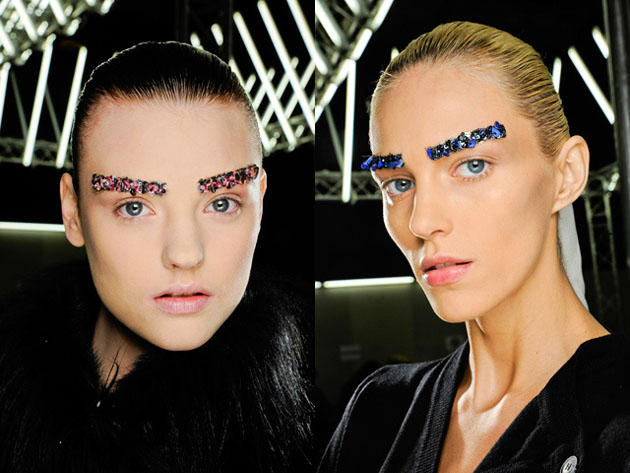
Eyebrows might seem like an insignificant thing in the whole trend discussion but the fact is that they often do a lot for the total look, answering to the demand of change. The non-perfect, thick arches are often associated with a feeling of youth, as well as they contribute to a carefree, “wake-up-and-walk” look. In opposite, we have throughout previous seasons also seen the bleached out eyebrows creating a much more dramatic act and referencing to a different type of appearance. For Fall 2012, several fashion houses presented magnified eyebrows. Brushed up at Chloé, deep dark and enlarged at Missoni to the striking, Maison Lésage crystal and pearl embroidered stripes used at Chanel, among others.
Micro-trends and the different ways of “carrying” the eyebrows are presented, and the magazine editorials add other aspects to the trend as it develops. With quite radical changes occurring every ten years, the current eyebrows might pave the way back for the fine, concealed and penned-out ones, which have already been seen on a few runways. Every trend needs the appeal of “newness” and with a few more rounds on the large scale, extreme or natural, it wouldn’t be more than expected that someone steps out and takes it back to the minimal.

The Obsolescence of Magazines
Recently a young, but soon to be important, curator declared that he didn’t like magazines. He backed the statement explaining that an article in a magazine is not long enough to engage in a profound discourse nor relaxingly short. He prefers reading books when it comes to knowledge and 50-word blog posts when it comes to news and trends. If he was the one predicting trends involving printed ephemera, the statement would clearly be that magazines are long dead. At least the printed ones.
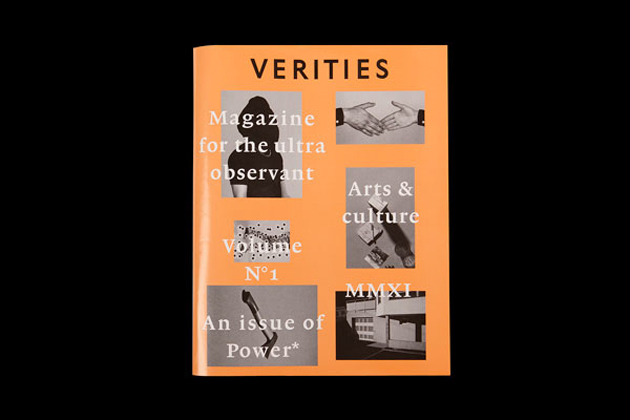
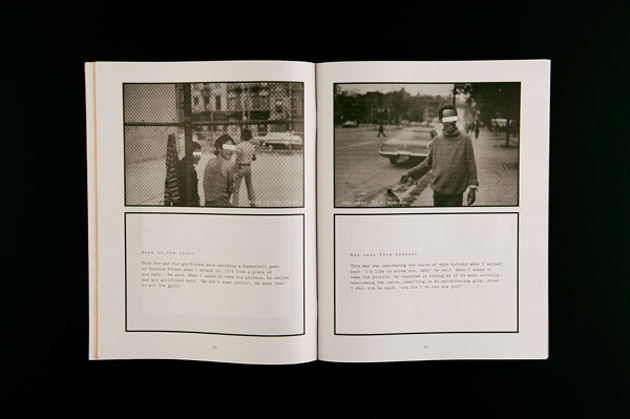
On the contrary, a recent article published on The Guardian’s website states differently. The article reports about a survey whose final results indubitably show that people still prefer reading printed magazines than their digital versions. Should we be surprised?
Even if the young curator won’t maybe ever waste his time reading one of them, some excellent magazines have been coming about lately. One of the newest on the list, currently presenting its second issue, is Verities – a magazine about art and culture. The bi-annual magazine has, since its foundation, stated it was a publication “of thought, observation and reflection giving equal focus to visual arts and literature”. The second issue of the magazine, entitled “The Muse Issue”, happily mixes literature, art, critique and theory in chapters titled “Observations”, “Inquiry” or “Studies”.
Verities isn’t the only one treating their readers with esteem and intelligence. The trend among independent publishers who started as ‘producing lovely magazines’ is gradually shifting towards ‘making culture’. Even though the trend part may still be included in the package, the shift in content is highly appreciated. Hopefully not only by magazine geeks.
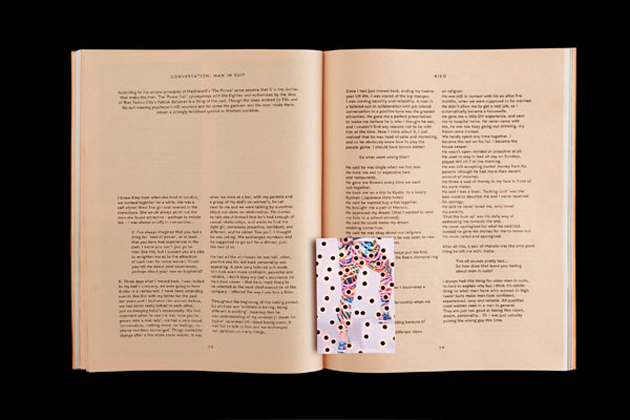
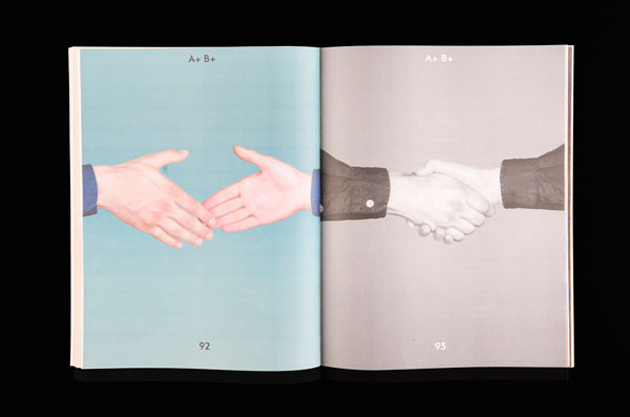
The Greek Fashion Crisis – An Introduction
We’ve all read the papers, Greece is a country on the verge of a financial breakdown. Naturally the effects on the national fashion industry have been dire and many designers have been forced to shut down their business. In a short article series on Greek Fashion, we will investigate the recession’s effect on fashion through interviews with industry insiders.
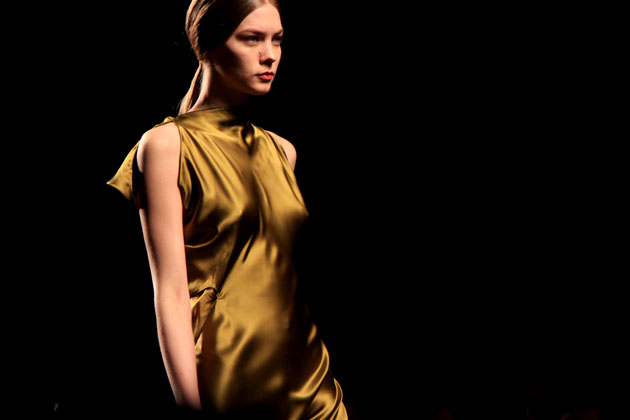
Greece was one of the countries that experienced a hard time recuperating from the international financial crisis a few years back. In early 2010 the Greek government was exposed for having had one too many fingers in the budgetary cookie jar. Soon after, Greece and its fashion industry were depending on loans, credits and the goodwill of the struggling couturiers for survival.
Greece as a fashion nation has within the last decade produced a handful of designers who have been influential on an international scale. Among them, Sofia Kokosalaki who designed ceremonial costumes for The Summer Olympic Games in 2004, Angelos Bratis who became Vogue Italia’s “Who Is On Next”-talent in 2011, and an accessory brand Persephoni who have been recognized by magazines such as Vogue.
Tonia Fouseki, head of the organizing committee of AXDW – Athens Xclusive Design Week, believes that the Greek designers need Governmental support in order to overcome, but insists that there is enough talent within the nation to constitute a competitive force on the international fashion scene.
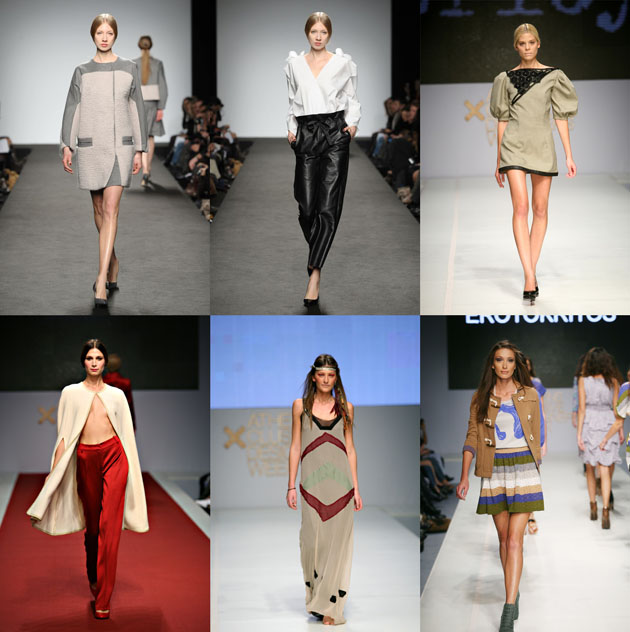
So Tonia, how would you describe Greek fashion? In what ways does the Greek fashion aesthetics differ from let’s say French and Italian Fashion?
Greek fashion is represented by dynamic and creative designers and has already exported great talents abroad that have managed to stand equal to international fashion houses. Some of the characteristics that make Greek Fashion aesthetics different are the rich color palette, the ethereal textiles and lines and the patterns inspired from ancient Greece.
The fashion industry worldwide has exploded during these last ten years, how has the Greek fashion industry progressed?
Greek Fashion industry has been progressing along with international fashion industry, but has not developed that much due to the small size of the local market and the financial difficulties. Another problem that Greek designers face is the lack of governmental mechanisms that can contribute to the transition from a small atelier to a massive production label and to the export of their work abroad.
Does the Greece fashion community mainly consist of traditional fashion houses, or are newcomers given a chance to show their capability?
At this point, many traditional fashion houses are shrinking in the local fashion community, and on the other hand flexible newcomers with new, modern ideas that offer another point of view to fashion by using innovative materials and forms have gained lots of followers in media, buyers and consumers.
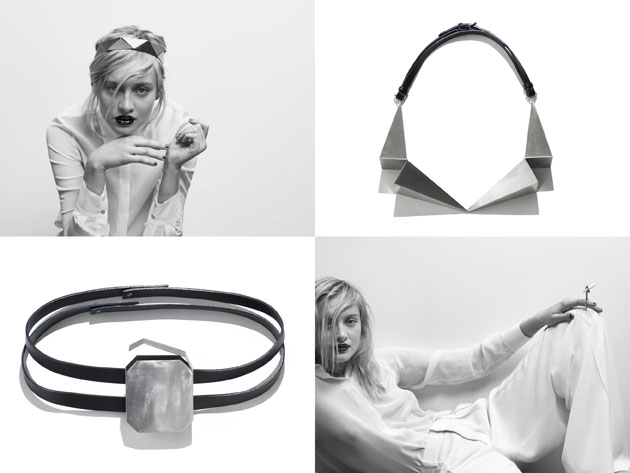
What happened to the Greek fashion industry when the economy started to collapse?
The Greek fashion industry was one of the fields of economy that was damaged the most from the financial crisis. The whole industry faced delays in payments, many shops and boutiques closed down and collections still remain unsold. Designers started to restrict their expenses by moving to smaller venues, by producing smaller collections and by cutting off the most of their promotional activity. Also pricelists have been reconsidered due to the new reality.
In what ways does the fashion industry work in times of financial difficulties?
Cash flow reduced greatly and the whole market works with loans and credits. Many Greek designers are trying to work with stores abroad and collection prices have been reduced in order to be competitive. Consumers are more demanding and asking for value-for-money solutions.
What do you think about the future for Greek Fashion?
Although as a country we are facing a deep financial crisis and recession that has affected fashion industry, I think that if the creativity of our designers will be combined with the support of governmental institutions of the fashion field, Greek fashion industry will develop and follow the standards of the international fashion industry. Our organisation, at the international fashion week in Greece aims to continue to offer to Greek designers a platform through which they can showcase in their country and export and promote their work abroad.
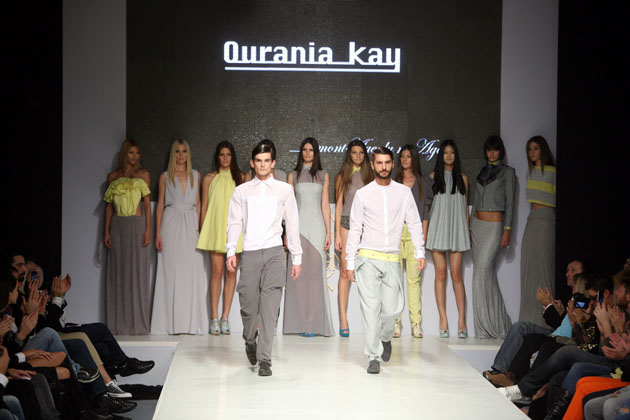
Awakening Of The Rainbow Dragon
MAAYA SHO started calligraphy at the age of 6, and has ever since been developing his distinctive approach towards ancient script, originally carved on strange materials such as tortoise shells or a piece of bull scapula as a method of fortune telling more than three thousand and a couple of hundred years ago in China. The unique and beautiful shapes of the script embody the very origin of its meaning, later evolved into Kanji [Chinese character], which inspires us to imagine the ancient people’s way of living and their interpretations of the world.
His works are in Thai Royal Family Collection and his handwriting can also been found as one of the official logos of the Louvre Museum and as collaborations for example with fashion maisons and restaurant designing. His unique style ‘Queen of the art of calligraphy’ was fully demonstrated in his outstanding exhibition and performance in Tokyo last April, in which he showed his latest work Ten-Ryu Ji-Ryu I (Heaven Dragon Earth Dragon I).
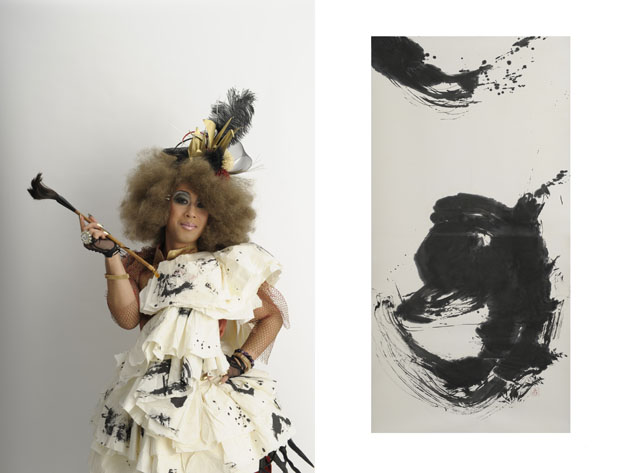
The Dragon is revered and considered as the eminent spirit in Oriental culture. In his exhibition, two Dragons – Ji-Ryu is considered as a symbol of anxiety or frustration in the modern society while Ten-Ryu is a symbol of purifying and extrication – inspired us to meditate on ‘liberation of the mind’ in our age, especially after the 3.11 earthquake, which was a critical turning point in his creative life.
“After the earthquake, I couldn’t take up my ink brush for a certain while. An intense feeling was deeply engraved in my mind: ‘Tomorrow is promised to no man, it’s as uncertain as the wind.’ It was then when I decided to change my name from MAAYA to MAAYA SHO. ‘SHO’ is the term placed after your name as your signature in calligraphy. Including it as my name itself meant that I was then determined to live with calligraphy forever.”
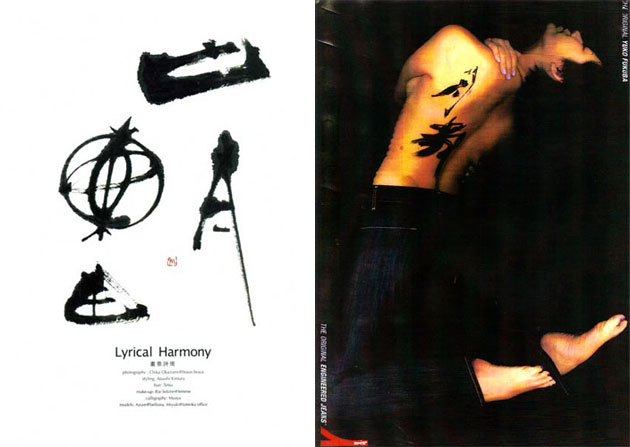
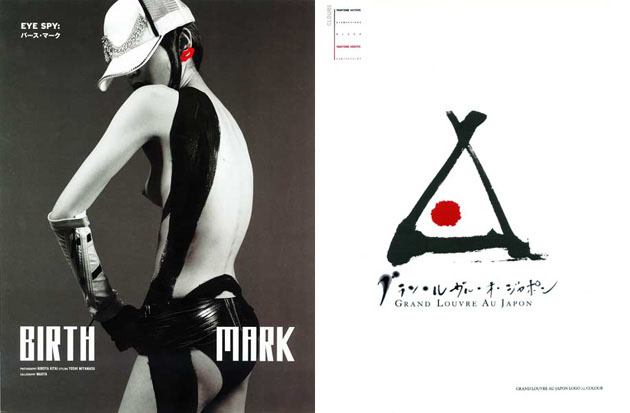
Since then, one of his intriguing approaches came to fruition in the form of the opening of his workshop on each new moon and full moon.
“Through my workshop, I would love people to know the power that words and Kanji have, also to feel the joy of the art of calligraphy. The workshop takes place twice a month, on the day of the new moon – a powerful day to make your wishes come true – and on the day of full moon when the creative energy grows highly. In my workshop, I help people to choose one word, which could be their favourite, part of their name or my suggestion based on Kyusei Kigaku (an ancient method of Chinese fortune telling). You write the word in ancient script, which is very graphic, and the word could be seen as your lucky symbol. The process will help you meditate on people’s communication, caring mind and the purposes of life at each stage. The most potent way is to do it with positive affirmation messages. Always, in present tense.”
Every form of life starts from the present. For MAAYA SHO himself, the one word that embodies his feelings now in the Year of Dragon 2012 is ‘明’ which literally means ‘light’. In ancient script, it describes the moonlight coming through the open window.
“You know, I love happy endings.” he smiled.
Ai Mitsuda – Images courtesy of MAAYA SHOThe Editorial: (Your Words Here)
It’s always seemed quaint to me that Oxford and Webster still go through the trouble to formally ‘admit’ new words into the English language every year. Web words, buzzwords, passing neologisms, schoolyard slang… and all of a sudden, “ginormous” makes it! It’s a real word! And at long last, you can officially use “retweet” in a game of Scrabble. But it all seems like a tireless quest to contain something that generally can’t be contained, like in the Academie Française’s futile attempt a decade or so ago to replace the word “email” in the French language with the anodyne “courriel.” Language grows as it goes, bitches.
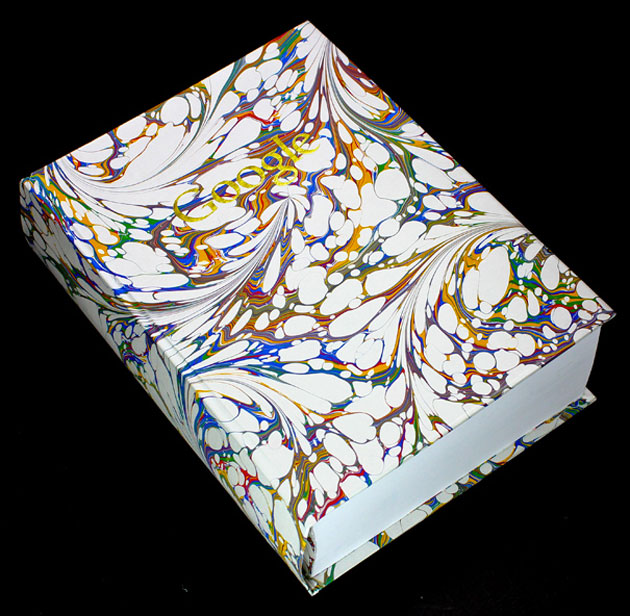
Now, for posterity’s sake it’s probably a good thing that someone bothers to put these buzzwords du jour down on a printed page, lest we forget them forever within a few years time. I’m just old enough to remember a few volumes worth of Encyclopaedia Britannica hanging around dustily on a living room shelf… remember when they were the one-stop-shop for science and animals and history and faraway Iplaces? But just a few short spins around the sun and those stolid, proud-looking books are aaaaaaaaancient. Like, prehistoric. Like, dead and gone. Like, completely and utterly useless.
But thankfully for us, there’s the Internet. Our swirling, at-the-edge-of-chaos, superconnected source for everything good and evil. The conduit for our culture and the most supremely dynamic platform ever devised for the sharing of human knowledge. And just like language itself, it invents and subverts and redefines itself like a force of nature. So, it seems like old misters Oxford and Webster best just leave the wordsmithing to the great collective brain. Open-source Urbandictionary and Wikipedia and their more specialised online cousins, afterall, are the source of all that we know nowadays. (And I mean that only half jokingly.)
So in an infinite stroke of genius, Felix Heyes and Ben West, two students at Kingston University, took to Google to create their very own version of the dictionary. (Hey, why not? We’re all authors of our culture, now.) For every word in the existing dictionary, the two used an algorithm to take the most prominent finding in an image search to make for a visual record of, well, us. And without throwing around the old ‘picture is worth a thousand words’ adage too much, this exercise in culture mining is far, far more indicative of the state of human language and society than any dictionary that almost arbitrarily lets “gaydar” and “grrrrrl” onto its pages. Several thousand images of porn, gore, and plastic celebrities later, it’s a look into an all-seeing mirror. And just like the day after an all night rager, you might not much like what you see staring back at you… but it’s real!
And since my Webster-backed computer spell check has just claimed that “rager” isn’t a word, my work here is clearly done.
Tag Christof – Images courtesy of Ben WestStedelijk Museum – The New Identity
On the 28th March the definite public opening of the Stedelijk Museum in Amsterdam was finally announced. The grand opening is scheduled for the 23rd September 2012, and it’s to be followed by a grand retrospective exhibition of Mike Kelley’s work. Years of delays on the construction site raised a lot of criticism from both the press and the public, and finally at the end of last month it was possible for the curious and the art hungry people in Amsterdam to take a tour in the new building. The new museum was slightly anticipated by a new corporate identity, and already debated projects by Mevis and van Deursen.
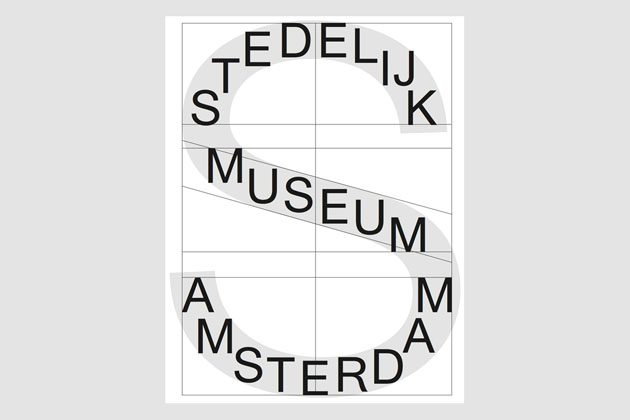
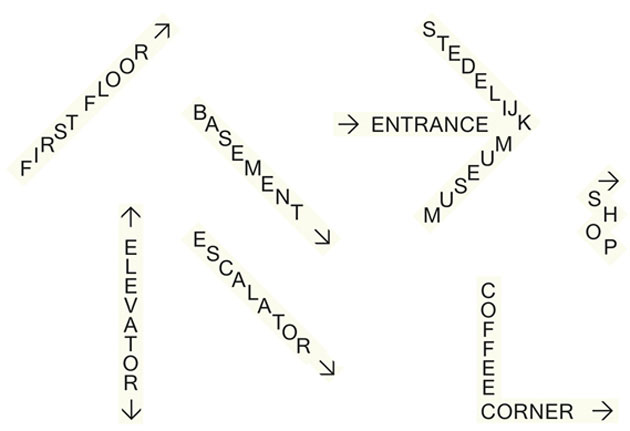
The now almost 70-year-old museum was initiated with the direction of Willem Sandberg – an incredible graphic designer himself – in 1945, and the graphic design that followed each of the museum’s exhibitions has become almost as important as the exhibition itself. Designers allowed to place their hands on those projects weren’t that many. After Sandberg’s tyranny Wim Crouwel came along, designing the modernist ‘SM’ identity that stood proudly until 2010.
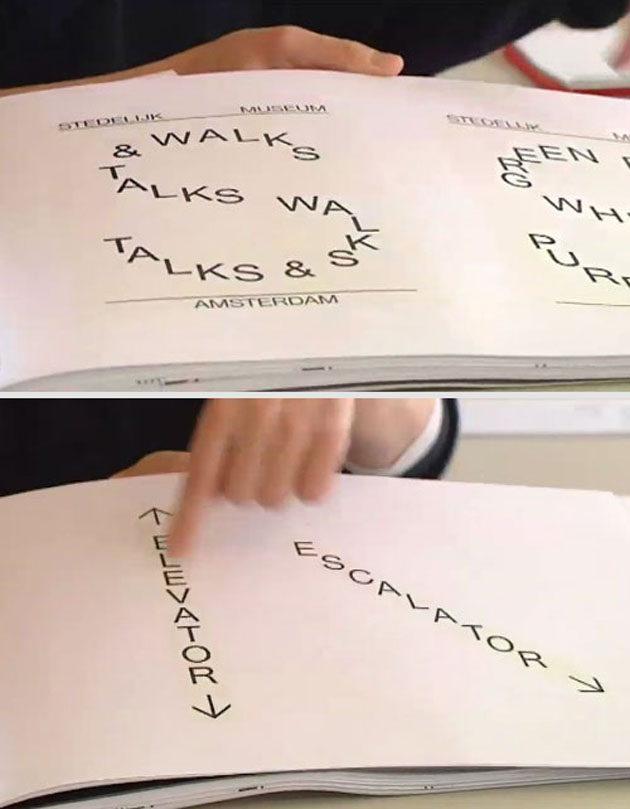
It should have been followed by Experimental Jetset’s SMCS logo, but it was actually replaced by the capital T designed by Mevis and van Deursen for Temporary Stedelijk. Mevis and van Deursen’s logo might seem a bit goofy at the first glance for hard-core modernist habitues. It plays with the iconic idea of the capital initials, as with the Temporary Stedelijk’s capital T, filling it with the museum’s full denomination. Hence, it becomes both an image, an icon and almost a phrase. After the initial moment of wonder you can’t but be amazed how Mevis and van Deursen manage to surprise each and every time.
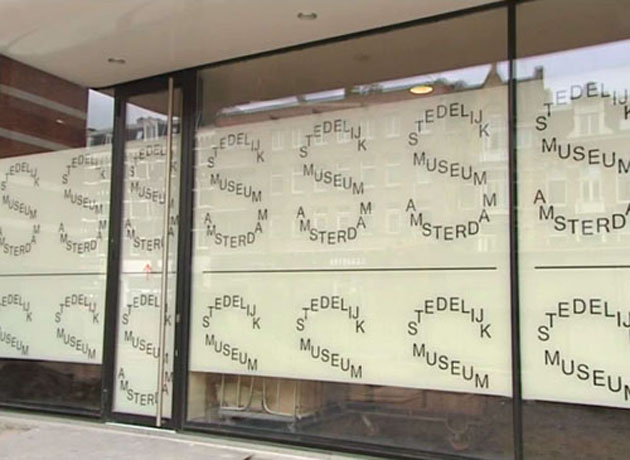
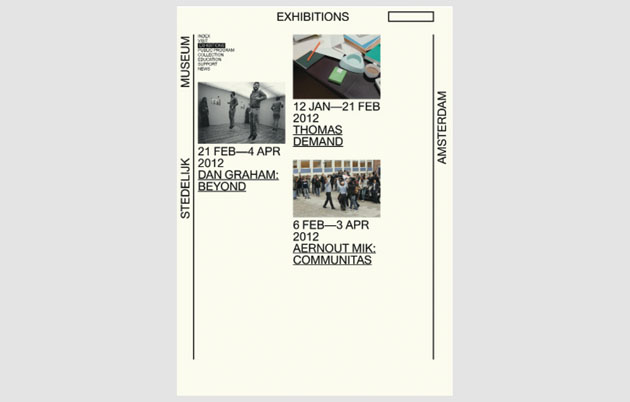
Sunday Breakfast by Love For Breakfast
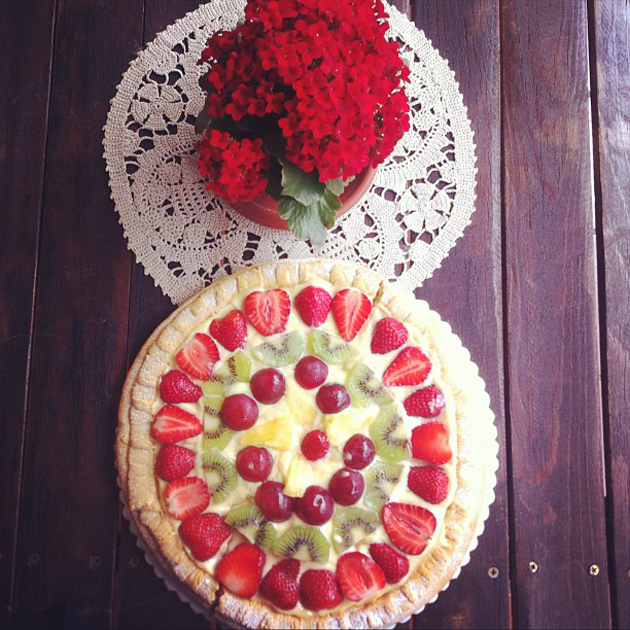
My mum’s homemade fruit cake warms more than the sun of May. The season I love the most has started, and when I eat a cherry, a smile shines on my face while expressing a wish.

.
Design consultant Tamsin Cook was born on a farm in the UK and now lives in Belgium. Other than rummaging through quirky little markets and antique shops in Brussels and Antwerp, her daily routine consists of traveling and scouting for fresh trends in cities such as Paris, London and Amsterdam.
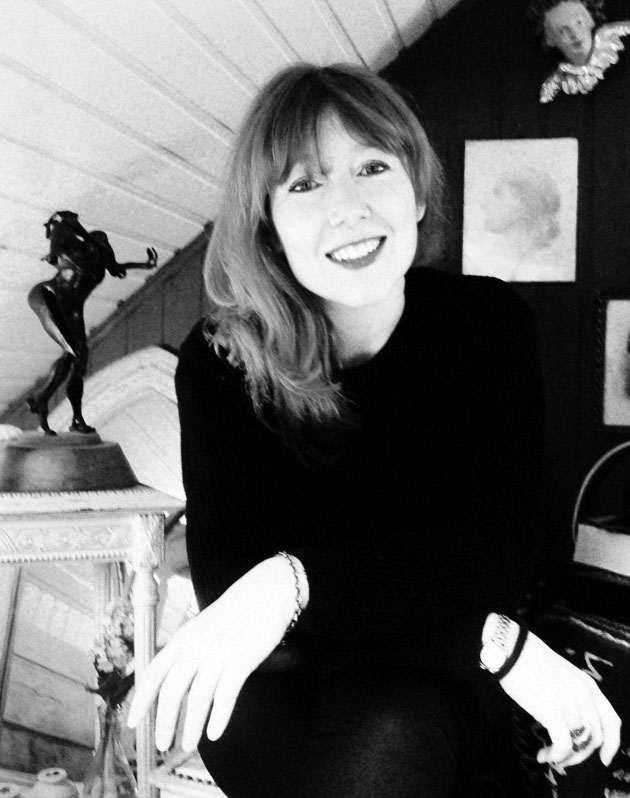
You currently work as Senior Design Consultant, would you care to develop that for us?
I have always worked in-house for companies until last year. Now I am starting out on a freelance basis. This includes designing and trend researching for different customers, it can be on a short or long term contract, depending on the needs of the client.
What is your background in fashion?
Well, I grew up on a farm in Devon, UK. I was always into making my own clothes, styling friends and my brothers. I have a big love for denim and workwear, I believe this came from my roots when growing up. I still like to check out my dad’s work jeans for finishing ideas actually! I studied a BA (Hons) in Fashion at the Surrey Institute of Art and Design just outside of London.
Your job includes scouting for new up-coming trends, how does one go about that, lots of travelling?
It’s an on-going process. Travel is a big part; this can be to city visits around the world to shop, visit stores, exhibitions and photograph people on the street. Visits to trade fairs where the newest developments in fabrics, yarns and prints are exhibited are important. Plus every day research, magazines, blogs, music, festivals, catwalks, art and exhibitions…
Brussels and Antwerp have quirky little flea markets and antique shops; I love to rummage through these on a Sundays. It’s great being so close to a lot of amazing cities as well, I can easily take the train to Paris, Amsterdam or London for the day for some fresh inspiration and people watching.
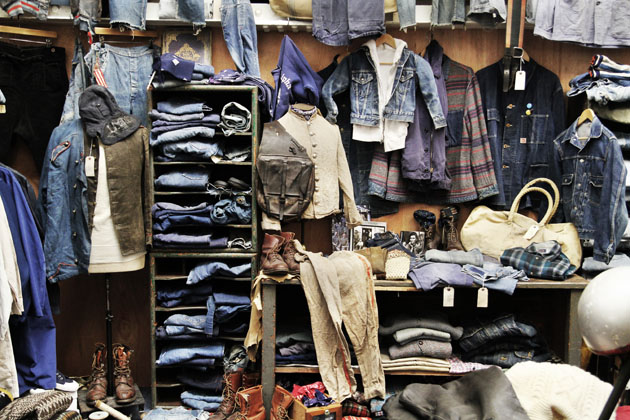
Is there a special source that often tends to provide trends, for example youth/street culture?
For sure youth, street culture and music are huge influences on fashion. Again, it depends on who you are working for. At Lee, where I worked for 7 years, a large part of the research was vintage denim and finding inspiration from great second hand pieces. I think so many people influence the fashion industry, from the film industry and artists to musicians, bloggers and photographers, the list is endless. The key is to keep your eyes open and not to get stuck with the same sources. I try to find new blogs or emerging artists/music every day. There are endless micro-trends emerging all the time.
How is the trend spotting applied in practice, have you recently for example found something in a vintage shop that later on turned into a design idea for one of the brands you work for?
At Lee when I was working on the kid’s collection, I found some great vintage pieces, like cute little dresses or blouses, we translated these into the collections. I always think you get a better result if you mix eras and ideas. Vintage buttons, trims, vintage denim, all these are huge sources of inspiration for the collections I have worked on. Second hand items are such treasures.
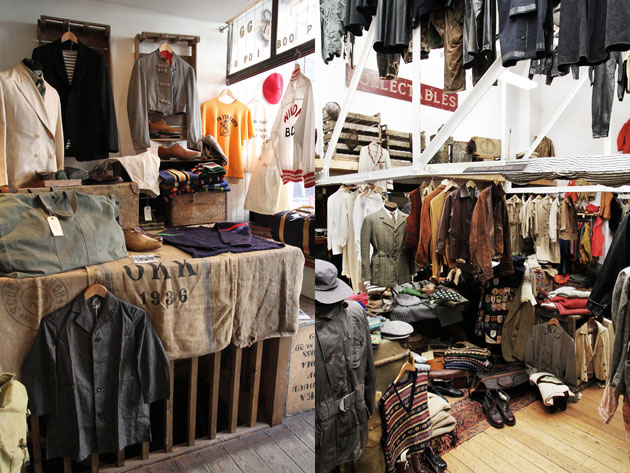
If you pick up a trend in, let’s say, an Asian country, is that one later applied to the Asian market, or do you experiment between the different continents?
That’s an interesting point! In a way it is a big melting pot. Everyone is taking ideas and inspiration from each other. Japan and Asia influences European style and vice versa. But that is great, and that is where you can really make some individual fusions and looks. A lot of Japanese brands have the most amazingly beautiful collections but would not necessarily be commercial to mass market here in Europe, but if tweaked, adapted and personalised you can create some interesting trends.
How do you look at the future of your business, and your own, any dreams waiting to be fulfilled?
People are much more confident and savvy in creating their own style and much more aware of trends than previously with all the social networking and online media available today. The fashion industry is going to have to get smarter, the consumer needs surprising and seducing in new ways. There has been the trend of pop up stores and now home shopping and styling parties are starting to be hip…What’s next, I think the consumer will decide!
For my own future, I like having the freedom of working freelance, I wouldn’t say no to work for a brand again though. I sometimes miss the daily interaction with people and the connection you make with a brand. Right now I have nearly completed my web page for my blog Rue des Bleus. It’ll be my platform for things which inspire me and also where I plan to build on some styling ideas. I’m intrigued by people and their look/style, so I’m hoping to scout some models which I can style for my blog.
